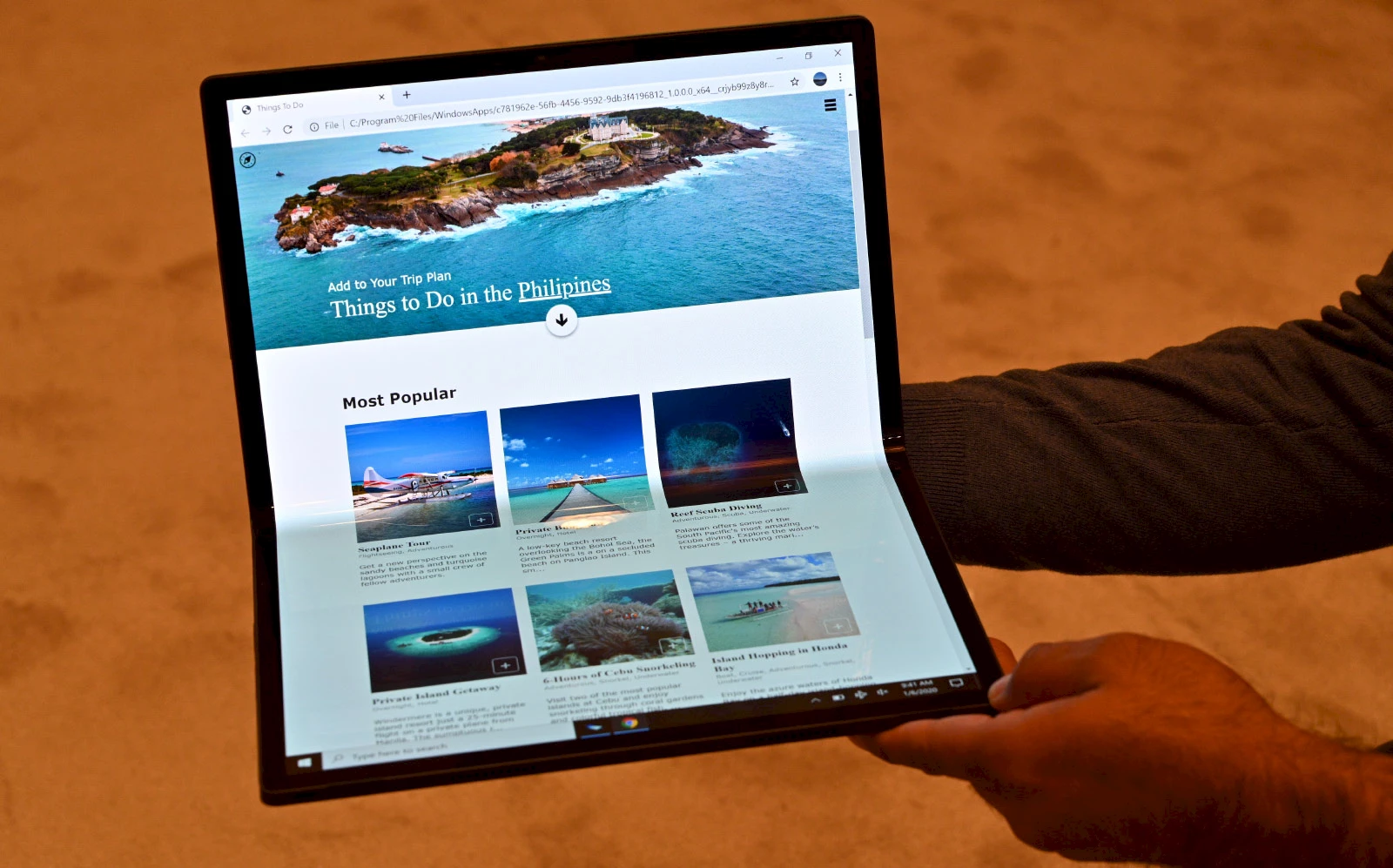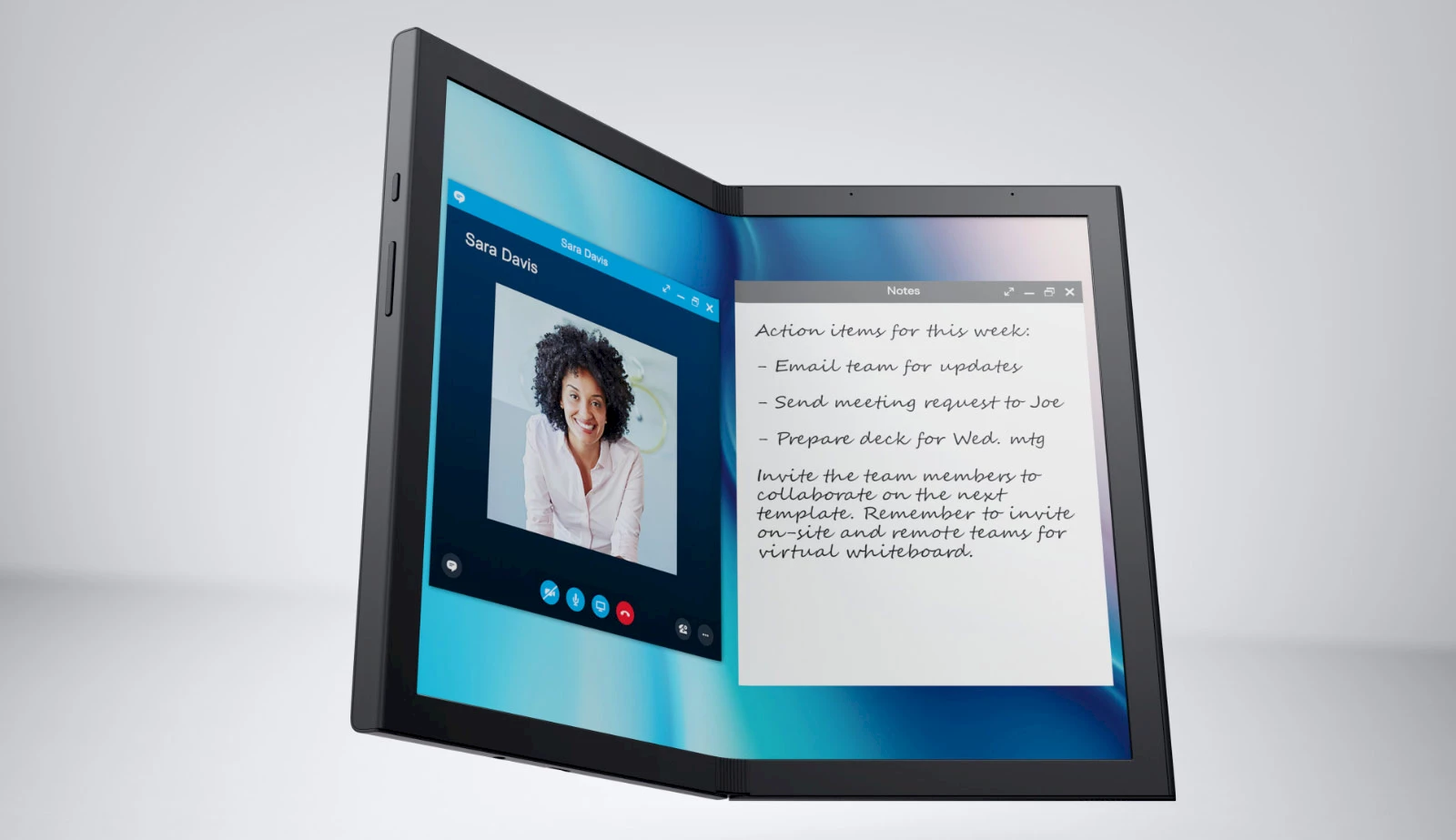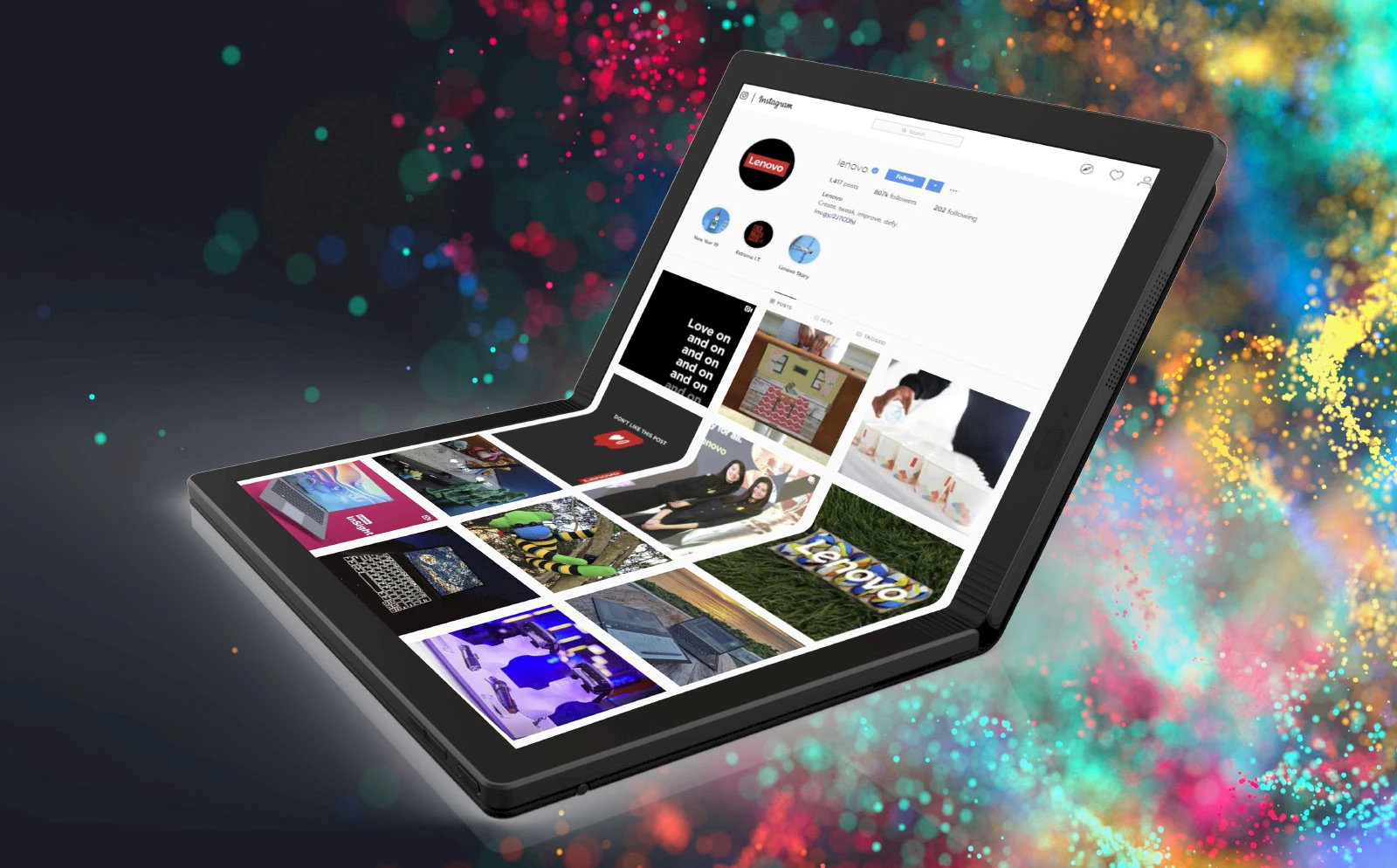Flood of foldable PCs

Horseshoe Bend. © Walden Kirsch/Intel Corporation.

Concept Ori. © Dell.

ThinkPad X1 Fold. © Lenovo.
After last year’s folding phone fad, brace for the Windows 10 folding laptop/tablet craze. That’s what it looked like, anyway, at the Consumer Electronics Show in Las Vegas, with the unveiling of Intel’s Horseshoe Bend functional prototype, Dell’s Concept Ori and Lenovo’s ThinkPad X1 Fold. The Horseshoe Bend is a tablet with a 4:3, 17-inch OLED display that folds in half to simulate a laptop computer with a 13-inch touchscreen, which replaces the keyboard and trackpad. The Horseshoe Bend is a “concept” product, designed to inspire builders by demonstrating what can be done with a new line of chips (in this case, Intel’s Tiger Lake). Dell’s Concept Ori is similar, but simpler and smaller, with a 13-inch display. Lenovo’s ThinkPad X1 Fold, unveiled in prototype form in May 2019, has now passed the conceptual phase and is currently in production. It should hit the market sometime this year at a hefty USD2,500. It has a 13.3-inch (2048x1536 px) OLED touchscreen, 8GB of RAM and up to 1TB of storage.
⇨ YouTube, “The future of foldable PCs at CES 2020.”
⇨ The Verge, Sam Byford, “Intel’s Horseshoe Bend concept is a look at the future of foldable PCs.”
⇨ Circuit Breaker, Chaim Gartenberg, “Dell’s Concept Ori and Concept Duet laptops imagine a foldable and dual-screen future.”
⇨ Cnet, Dan Ackerman, “Lenovo ThinkPad X1 Fold: Foldable screens come to Windows tablets.”
